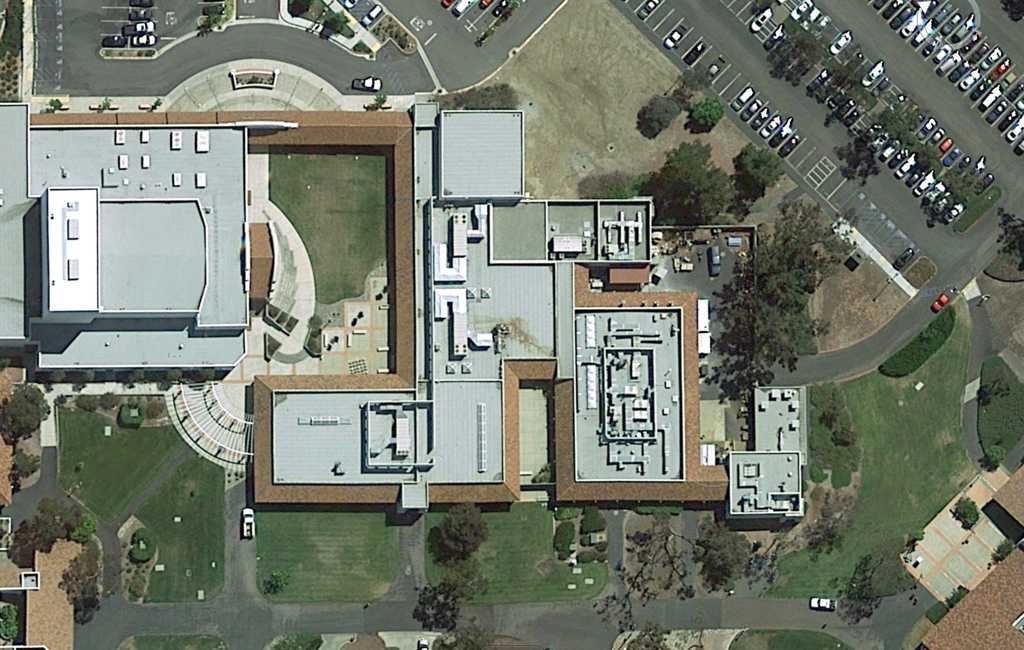Cuesta faculty gather outside the administration building demanding a raise in pay in response to recent surplus.
Photo courtesy of Tony Rector-Cavagnaro / Cuesta College
By Rachel Barnes
News Editor
In stark contrast to Cuesta’s announcement at the end of last semester that it had a $1.3 million deficit, officials now say the college has a surplus of about $9 million.
Administrators originally forecasted that the deficit was supposed to increase during the current year — however, officials instead announced at a recent Board of Trustees meeting that Cuesta has a large amount of excess money.
“What appeared on paper to be a deficit turned out not to be,†Gil Stork, Cuesta’s president, said regarding the contrasting information.
Stork and other administrators plan to use the money for priorities that are a one-time purchase. He gave the example of computers for classes.
“You can’t turn around and invest that in salaries because salaries are on-going,†Stork said, regarding the use of the contingency money, which is money that’s not being put in the school’s required reserve.
Cuesta’s budget has been a point of debate between faculty and administrators who don’t seem to agree on how the money should be distributed. In fact, a federal mediator has been brought into contract negotiations in an attempt to resolve the disagreement about wages. And faculty recently gathered in solidarity outside the administration building, where negotiations are being held, to bring attention to the issue.
Debra Stakes, the president of Cuesta College’s Federation of Teachers, said that she and other faculty members are frustrated with how administrators distribute money for the campus.

She said that among 11 comparable schools Cuesta sits at the bottom of the list for faculty salaries. She even goes as far to say that the college is not only last, but that the pay scale here defines a new bottom.
“Administration refuses to discuss a plan to get faculty to the average,†Stakes said.
Faculty need a 7 percent increase in pay to get to the middle of the list of comparable schools, Stakes said, adding that faculty has only received a 10 percent increase over 10 years.
“One percent a year is not going to catch us up,†Stakes said.
Stakes is concerned because it is getting increasingly hard for staff to pay their bills because the consumer price index has increased 21 percent.
“Sixty percent of full-time faculty work overload classes just to pay their mortgage,†Stakes said.
One thing that faculty and administration agree on is where to put the contingency money.
Both parties believe it would be in the best interest to invest the money in a fund so that the money earns interest.
They believe that doing so would help meet the rising rate of pension costs, which could turn the one-time surplus money into ongoing money for expenses such as salaries.
Stork explained that enrollment of full-time equivalent students is small compared to the population of Cuesta students in general. Stork said this was a big factor in last year’s deficit and the forecasted amount for this year.
He said that even though Cuesta is falling behind in providing money for faculty salaries they can’t overextend funds that will jeopardize the school.
“It would be in the best interest of the college to put money into salaries, but it’s not possible,†Stork said.
According to Stork, Cuesta isn’t receiving enough money from the state because enrollment is stagnant and the school has a small ratio of full-time equivalent students to the total students.
Information from Cuesta’s final budget shows the number of full-time equivalent students hovering over 8,380-8,320 students.
However, data provided by Cuesta’s Institutional Research Department shows that standard enrollment has been increasing since the 2013-14 academic year when the campus began to rebound from a three-year decline.
That year 14,425 students were enrolled in Cuesta. That number climbed to 15,405 the following academic year and to 16,709 in 2016-17.
Stork said he takes this situation very seriously because he wants to make sure that everyone is treated fairly and that everyone feels respected.
“I care about every one of our employees and every one of our students,†Stork said.
Stakes responded that she has no doubt Stork’s comment is sincere, but that a pay raise is warranted to continue providing quality education to Cuesta’s students.
“Faculty continue to play a huge role in the success of the college,†Stakes said. “Yet the college fails to maintain faculty salaries to keep up with the high cost of living in SLO County.â€





















